The main varieties of stained glass in architecture
Each type of monumental art uses special techniques and materials. Not everyone knows what a stained glass window is, the history of its appearance and classification. Previously, window openings were decorated with colored glass, which not only transmitted light, but also decorated the room. First of all, they were used for the decoration of cathedrals and monasteries.
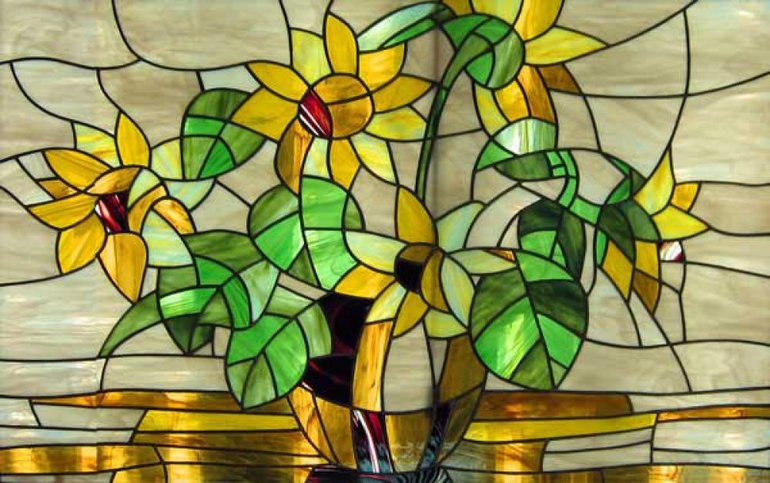
A bit of history
The first mention of stained glass can be found in ancient Egypt. At that time they were laid on, and colored glass was simply glued onto a transparent base. But art reached a special peak in the Middle Ages.
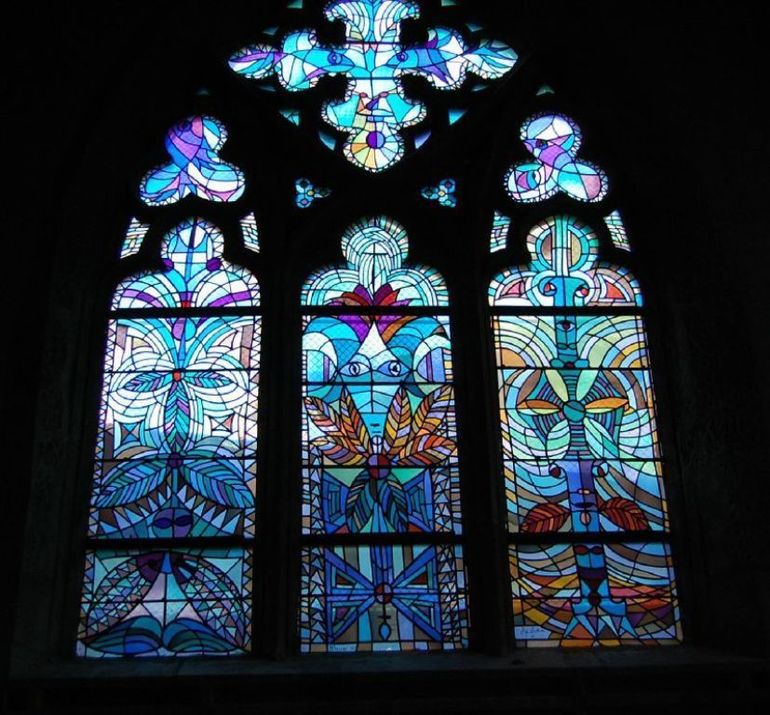
Stained-glass windows were used in the construction of temples. The pieces were fastened with lead jumpers and inserted into window openings. With the help of colored glasses, whole paintings were created that were large and colorful. They served as the embodiment of the idea that a meeting of the Earth and Heaven should take place in the church.
In the Renaissance, the stained glass technique has changed a bit. - began to use transparent glass, on which drawings were applied, after which the picture was fired. Sandblasting has been developed. The political situation has changed in society, and new plots for stained glass have appeared with it. In addition to religious subjects, everyday scenes began to appear. Glass began to lose color intensity, decorativeness.
In the XVII century, the popularity of stained glass windows began to decline. The revival of this art form took place in the middle of the 19th century. It has become popular in public and private architecture. Most often, they began to use it in the Art Nouveau style.
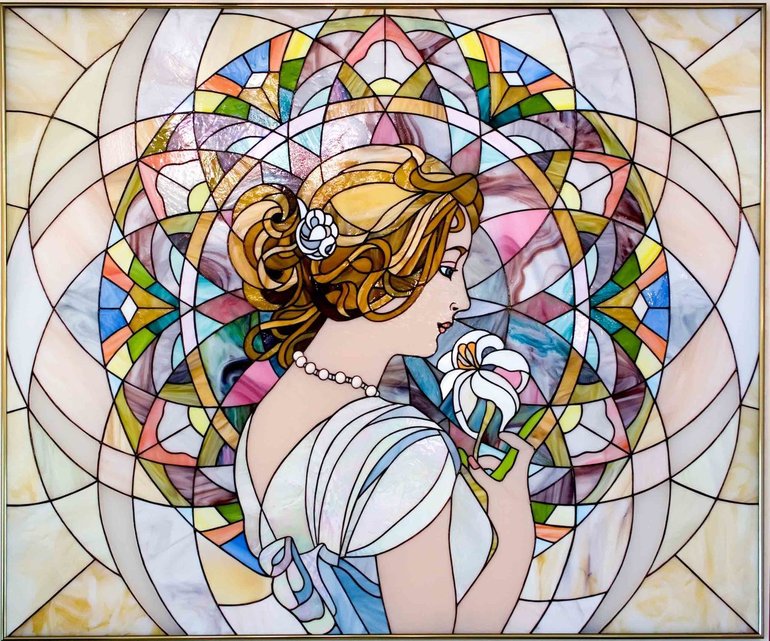
High aesthetic properties and high cost of stained-glass windows have led to the emergence of various analogues and substitutes. The range of application has gradually expanded. Now colored glass is used not only to decorate light openings.
Stained-glass windows can be filled:
- interior doors;
- partitions;
- furniture facades;
- chandeliers and much more.
If necessary, you can change the composition of the glass - this gives additional effects. For example, you can add air bubbles or metal threads. A heterogeneous surface will be very beautiful.
Necessary tools
Anyone can do stained glass on their own. To do this, he needs to understand what materials will be needed to work. You will need a soldering iron, a ruler on suction cups, a grinder and a glass cutter.
Soldering and dyeing materials are sold in powder form. Therefore, it is necessary to prepare a strainer for their distribution. Additionally, you may need:
- brushes;
- metal tape;
- glue;
- transparent paints.
All materials and tools can be found on free sale. It is advisable to study the history of its development before studying stained glass art. These data are presented in specialized literature. At home, you can create small stained-glass windows in the form of paintings or to decorate vases, chandeliers.
Basic Techniques
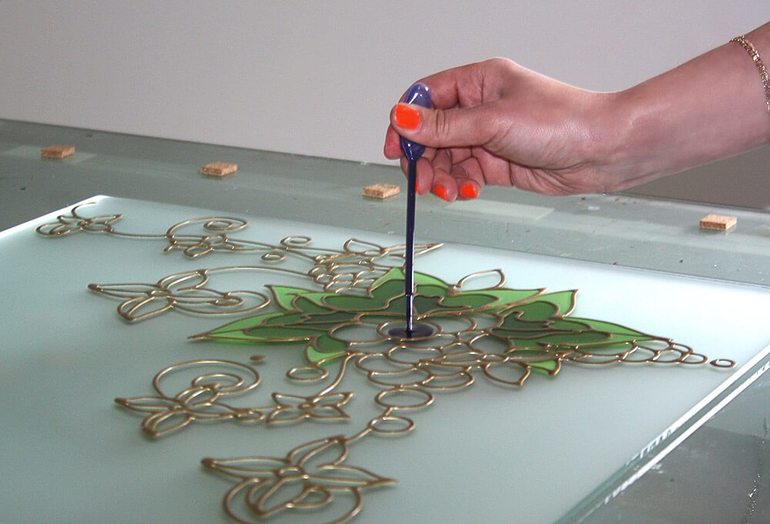
In the modern world, there are different types of stained-glass windows, but only some of them are attributed to the main options. The first definition of this type of art appeared in the Middle Ages. Then stained-glass windows called paintings from pieces of colored glass, which were installed in metal frames.
This type was distinguished by the complexity of execution, so the creation was trusted only by experienced craftsmen who were able to prove their level of professionalism. For the manufacture of such paintings will require:
- various tools;
- metal frames;
- bright workplace.
To create classic stained-glass windows, you need a separate workshop. It makes sense to equip it only on condition that a person wants to constantly and seriously engage in the manufacture of products. Before that, he has to undergo serious training.
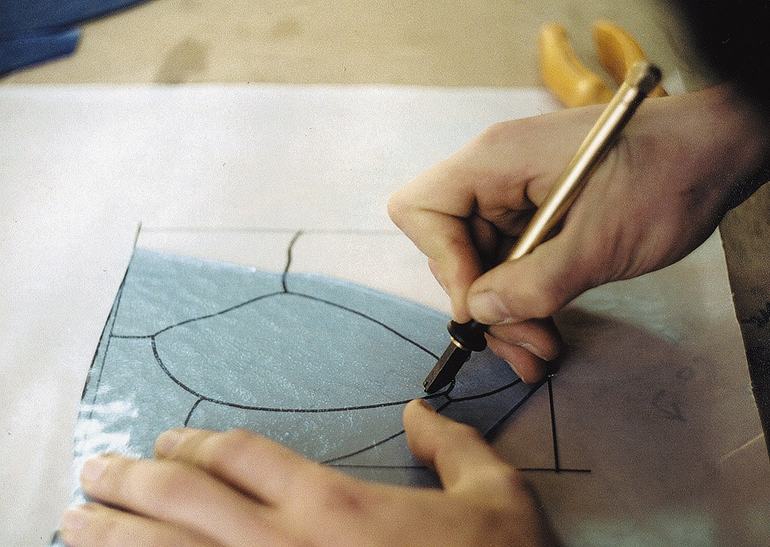
The film technique is also called English. A pattern is applied to the glass and a color film is already applied on it. Each fragment is framed by a lead tape. If such a picture is installed in the interior door, then the processing of each piece is carried out from two sides.
Film stained glass looks like a classic. Its main advantage is that film is applied to whole glass. You do not need to cut anything and use a large number of tools. A similar picture can quickly make even a beginner.
The Tiffany technique is similar to the classic version. To use it, you need to prepare a full-size drawing-template. It is made in two copies, one later cut into separate fragments. They will be used to cut pieces of colored glass.
The edges of pieces of glass are processed and ground to smoothness. Then each of the elements of the stained-glass window is bordered by a copper ribbon, the ends of which are soldered together. Fragments are fastened using tin soldering.
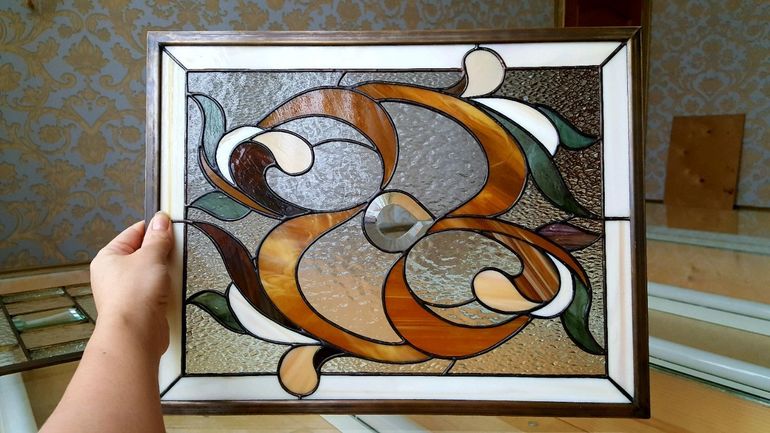
The Tiffany technique is used for the manufacture of interior items. Copper tape is flexible and resistant. It is easy to deform, it retains its shape better - this makes it possible to use the material even on small parts. After soldering, the parts are rolled with a roller, which improves the degree of crimping.
Special options
To create sandblasted stained-glass windows, you need special equipment. A stencil is applied to the glass sheet and fixed. Open areas are treated with a stream of sandthat is fed through the apparatus. It creates high pressure and the surface becomes dull. After completion of the work, the stencil is removed, and the drawing remains on the glass.
This is an easy technique for making stained glass, which does not require special skills. In the absence of equipment, you can achieve a similar effect with ordinary sandpaper. In this case, the stencil is best made of thin metal.
Cast equipment is the most difficult. Each piece of glass is cast manually. In the process, each piece is given a special shape and texture. Mosaic is assembled into a single picture with the help of metal reinforcement and special solutions. Cast stained glass cannot be made at home, as it requires equipment, and a person must have special skills in working with glass.
The etching technique is based on the use of hydrofluoric acid - this substance negatively affects silicon dioxide. A stencil is applied to the glass web, which is resistant to acid. On free areas, you can apply the substance in a different number of layers - it all depends on how much the picture should be.
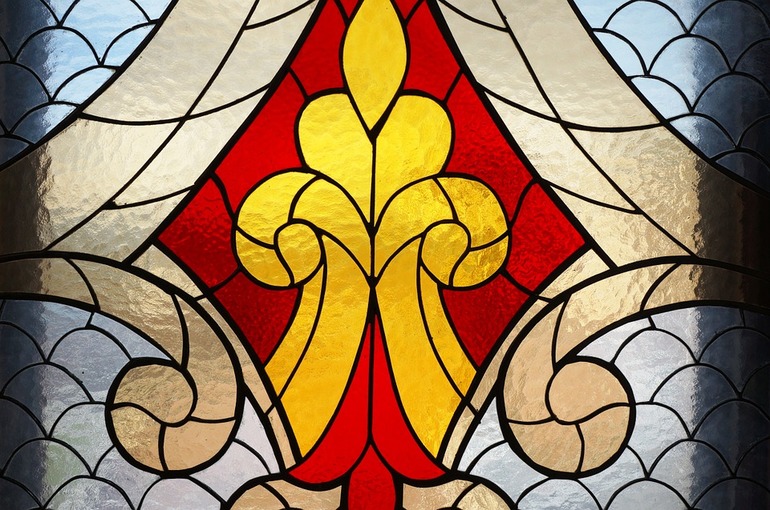
Single-layer application allows to achieve a matte effect. This technique is not suitable for home use, since acid requires safety precautions. The room should be well ventilated, protect the person’s hands and face with a mask and gloves.
Popular styles
The concept of "stained glass" appeared in the Middle Ages. At that time, colored glass was used to create religious paintings. In the modern world, a drawing can be made in a different style, the main thing is that it is combined with the interior.
Antique stained glass windows resemble a mosaic that contains elements of Greek ornaments: drawings of amphorae, nim, columns, etc. Sometimes, a craftsman can use mixed media and add film or ceramics to the glass.
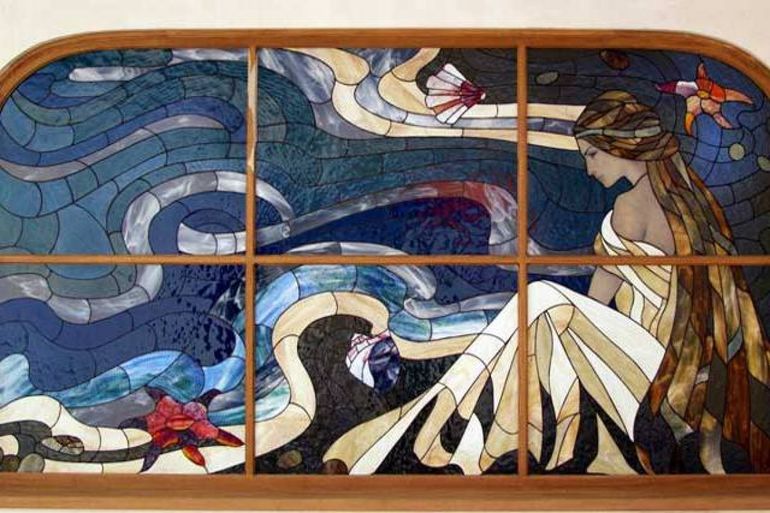
Especially popular is the ancient Egyptian style. To create such stained-glass windows, only warm shades are used - sand, coral, yellow and others.Ornaments depict sacred animals, scenes from the life of the pharaohs and much more.
Gothic style also does not go out of fashion. Such stained-glass windows have deep rich shades: dark green, burgundy, ultramarine and others. Fragments are processed by blackened copper or patina. With the help of this style, hunting scenes, animals and religious subjects are depicted.
There are different styles of stained-glass windows - this allows you to use the technique in any interior. With its help, you can not only decorate the room, but also make it original. This is not just a way of decorating, but a real art. In European countries, many genuine masterpieces of stained glass have been preserved.
- How to choose a vacuum cleaner taking into account the characteristics of the house and coatings?
- What to look for when choosing a water delivery
- How to quickly create comfort at home - tips for housewives
- How to choose the perfect TV - useful tips
- What to look for when choosing blinds
- What should be running shoes?
- What useful things can you buy in a hardware store
- Iphone 11 pro max review
- Than iPhone is better than Android smartphones



